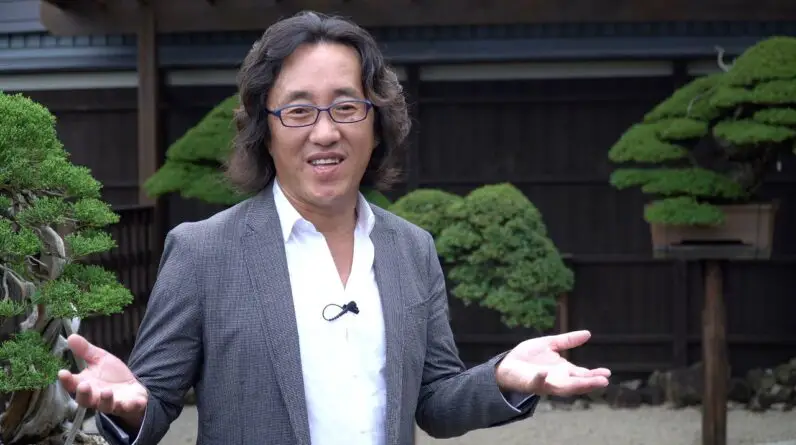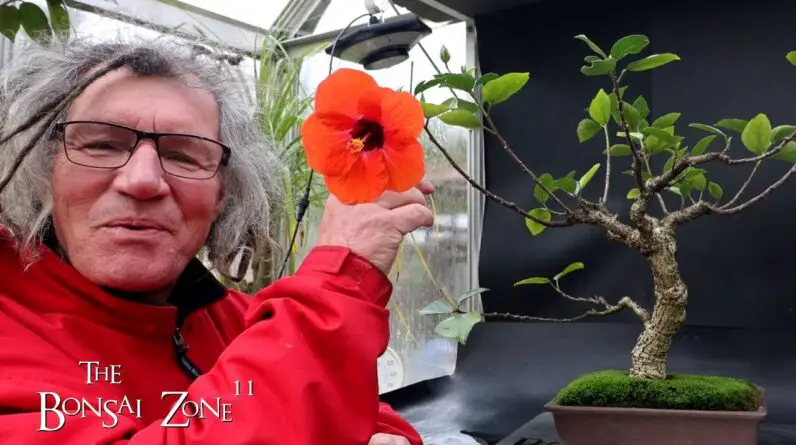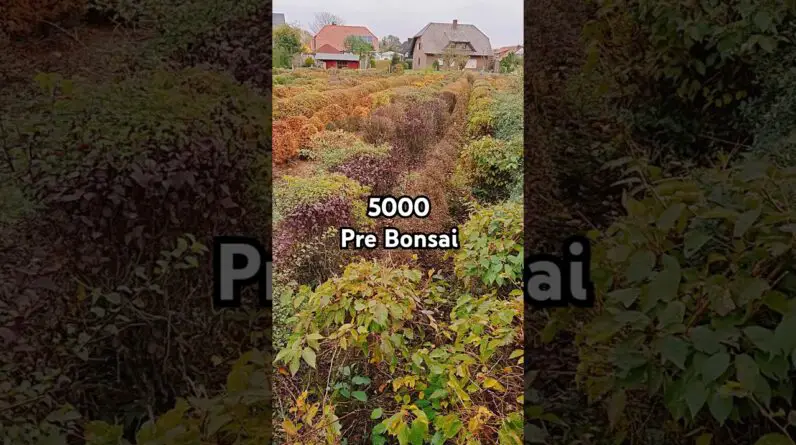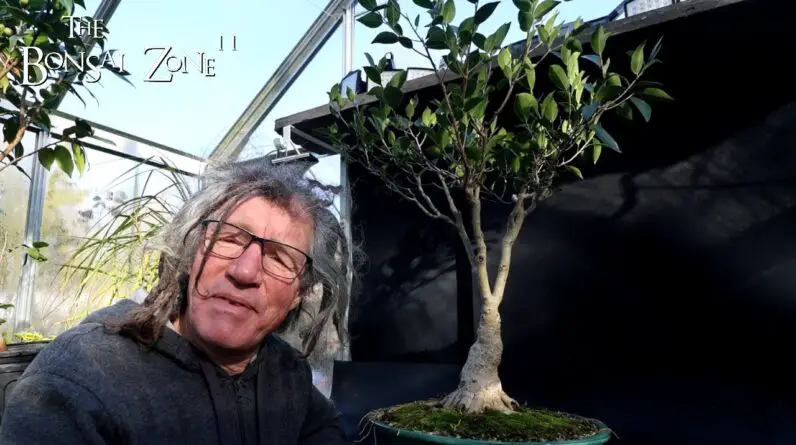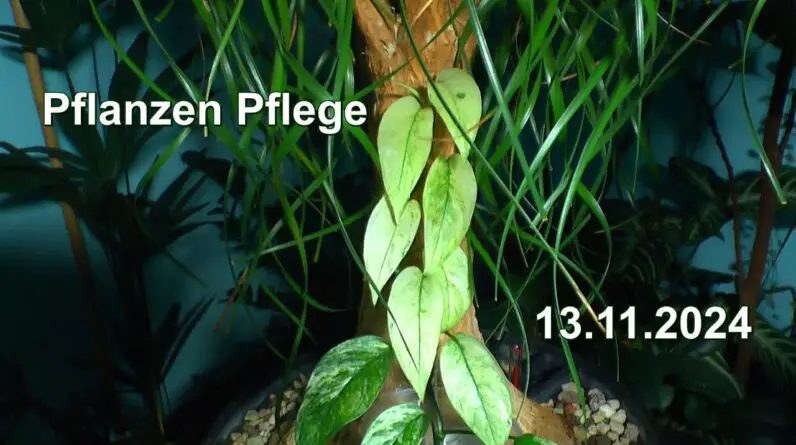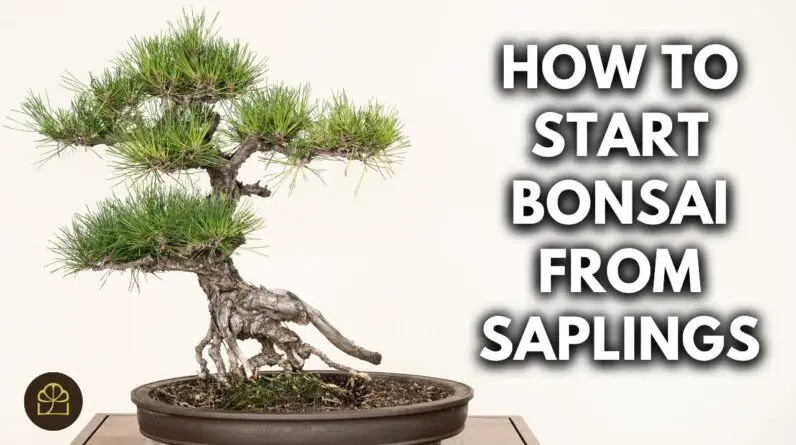Well, what time am I here? This is a large crossover, and this tree has a very interesting story behind it, because it was given to me or gifted to me about 25 years ago, when I used to do the Chelsea flower show and one of the judges of The Lily group.
His name was Ray Jeffs, I think. Sadly, he may have passed away – I’m not sure, but he was a member of the Lily, judging group, but he used to have a small Nursery where he grew a lot of cactus and succulents, and most of these Cactus and succulents are very popular because you don’t Have to do much watching to it so this tree, I will tell you the history.
He gave it to me 25 years ago, because by that time he was about 75 years old and he said that when I get older, I want to pass it on to someone else. So he passed this tree on to me and he told me that he was given that tree 45 years previously by another grower, so he was in fact the second person who owned it.

I’M the third person he owned it when it was given to me it had three massive trunks as thick as this trunk. If you come closer and look at the base here, this has Calistoga, but there was a bit trunk here.
I broke it off and another trunk here I broke off, so I broke off a lot of trunks because it was too ungainly and too large to manage. So that is what I did. I just broke it off and I tried to reduce it to just one trunk, but in the last 20 years that I’ve owned it more trunks have grown.
So you don’t really see the proper tree shape when I go out to India, I’m always fascinated by the crassula they get there and the crassula they get. There is the one which grows in South Africa, which has got very small leaves, and it is very viable.
I think that is Dracula Afra, possibly, and that is extremely good to work with, but these are difficult to work with they’re very brittle and they’re mainly grown as a succulent for people who keep Cactus collections so simply by pruning.
I will give it more of a Bonsai shape. Let’S look at the tree from every side to see what is the nicest face, because, depending on the nicest face, this is not so nice I can make it look more tree-like.
So if I turn it around, I think this is the better face and these little plants have just grown from suckers and I can just pull it out. They all have Roots, so you get another plant from there. Look at that all separate plants.
You could get twin trunk tree from that then this one, I think, a bit difficult to pull out, but what I can do is probably snap it off or break it off. Thank you! So 34., it’s just like cutting a potato.
It’S so soft over, and I will probably make several cuttings on this, so it’s not top heavy. Each of these plants will make cuttings and we have another tree from there. Now I’ve exposed the trunk a lot.
Let me see what else I can expose to make it more more tree like [, Music ], it’s amazing! Just by pruning, you can get a very nice shape. So, as I always remind people when you’re making Bonsai it’s the trunk, which is most important because in Bonsai we are trying to create tree like images and trees have trunks shrubs, do not have trunks.
So as soon as you start showing the trunk, it begins to look tree like so I will concentrate on this side, which is a front and keep showing the trunk as much as possible. I probably don’t need the tree that tall, otherwise, if you keep letting it grow and you reach the sky, so let’s be bold and cut some of them.
This is just like cutting a potato. It’S so soft! Oh my God. Can you imagine the number of cuttings? I’M going to get out of this tree be bored telling myself with that part, another conflicting trunks there.
This one is conflicting with this one. I’Ve got to take a decision, it’s not looking good, so I think the choice between this and that which one do you think we should take off Josh this one, absolutely right, absolutely right.
So this is the one we’re going to take off [ Music ]. That is a big cutting big cutting. Now you can see the trunk more clearly. How long did that take hardly any time at all foreign, so I will follow the progress of this tree.
This is going to be the front [ Music ] with that massive trunk, and hopefully it should look more like a tree and I’m going to put all these up in just pure sand and we will get loads of cuttings for those of you who live in Temperate climates, these trees cannot stand temperatures lower than 10 degrees Centigrade, lower than 10 degrees Centigrade.
They will rot, so you’ve got to keep them absolutely frost free, not only frost-free well above the normal temperatures yeah. Maybe so you want to see which already looks like that. Okay, you make a cutting from there.
These all got a potential to look like a tree, so we’re gonna have fun just putting these in some sharp sand, and hopefully they will all root. So there is a quick demonstration as to how we make this look more tree-like, so we can return it outside these stay out in the garden throughout the summer and by early October I have to put it indoors and it stays indoors without any watching.
We don’t have to water, these trees they’re perfectly uh, okay, without any watching because being a succulent, it requires very little water, so I’ve got something that looks like a tree, pretty icon wired.
As I said in India, there are types that you can wire, but this is karma, so I’m going to create a conical shape with a thick trunk, and that is my bonsai crassula. So this is the large pressure that I pruned.
Two days ago, I took off some very massive branches and I cut it close to the trunk and hopefully, they’ll call us over and form these lovely, rounded uh calluses. What I want to show you now is what I do with these branches that I cut teaching you how to make cuttings out of crossover would be like teaching grandmother to suck eggs.
It’S that simple. If I were to just leave it lying around, it won’t die because it’s like a succulent or Cactus. It will begin to sprout new shoots and leaves from the trunk. You don’t have to insert it into soil at all.
So there are many many ways of doing this, so I can just leave a lying around and they will fall the fact that you even left a leaf lying on the ground from the edge of the leaf you will get. I can’t find any leaves that have fallen recently, but believe you me, if you just leave a leaf around, you will find that they will start to root, so you can even stick a leaf into the soil and that will root as well.
So you don’t always have to stick branches or trunks. I’Ve brought here a tray of sharp cell. This is just shop Builder sand that has been allowed to weather in the rain so that the chemicals are all washed out and I like to get ready-made plants.
So I keep all these thick cuttings and just insert it into the sand. The reason why I’m using sand is because sand is drier and they won’t rot. The stems so much. I find that if you put it in the compost, there’s a tendency to to make the stems rot.
So sand is a good medium to use and, as I said earlier, you can just do an experiment. Leave them lying around and you will find that Roots will come from the edge of the leaf and Roots will also come from there.
So you don’t even have to insert it, but if you want to insert it into some sort of routine medium, then sharp sand is very good. I’Ve also done a little experiment here. What I’ve got here in this bucket is some water, [ Applause, ] and just some spagno Moss there, so it doesn’t dry out too fast and I’m going to compare the the quickness or the speed with which they will root, keeping it in water like this, hoping That it won’t rot and also sticking them inside.
So this is another medium that I’m using. These are the Japanese clay trading pots. So this is our standard, potting Bonsai copping potting compost, which has a pack of armor volcanic bread and all sorts of things.
So we always like to do a little experiments like this by using different types of media to see what the results are. So just sticking it on there, like many of my projects, I’m going to follow them through to follow the progress and see what happens so.
We’Re going to try pure sign our standard, Bonsai mix and a bit of water to see how they root and the speed with which they root over a period of time. And I’m also going to follow this through to see how it progresses.
Because this is going to be a relatively slow process, when I say slow, I would say within six months or a year, I should get new brushes growing. So for those of you who are expecting an instant Bonsai, I don’t think I can do an instant on that, because I have to wait for new shoots to grow.
I just showed you which were the branches to take off. So let me end this video by describing what to expect from this tree. As I said, I hope you are not disappointed that I couldn’t make an instant Bonsai from it because, like many of our deciduous Bonsai too this, although this is not deciduous when you do a demonstration, all you do is trim up all the unwanted branches leave the Trunk that you want to develop and hope for new branches to grow, so hopefully this tree will produce new branches and I will create the conical shape and have the trunk visible.
What happens to all these? These are all going to be rooted and, as always, I like to do experiments so I’m doing experiments with rooting, the crassula in water rooting them in akadama and rooting them in pure sharp sand.
So, let’s follow this project through and over the next few months you will see the results of what I’ve done. So there you go. This is the large crassula project just started, and I hope you will follow this through with me to show you the progress of this lovely question, which I believe is over 80 years old.


